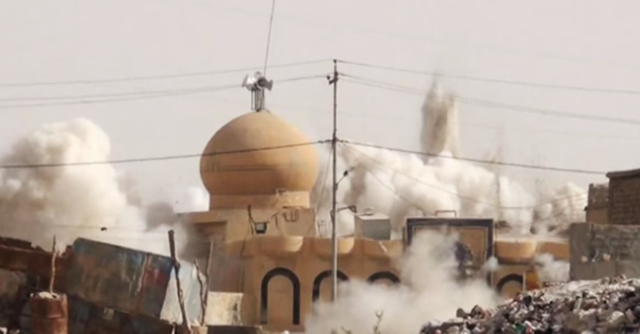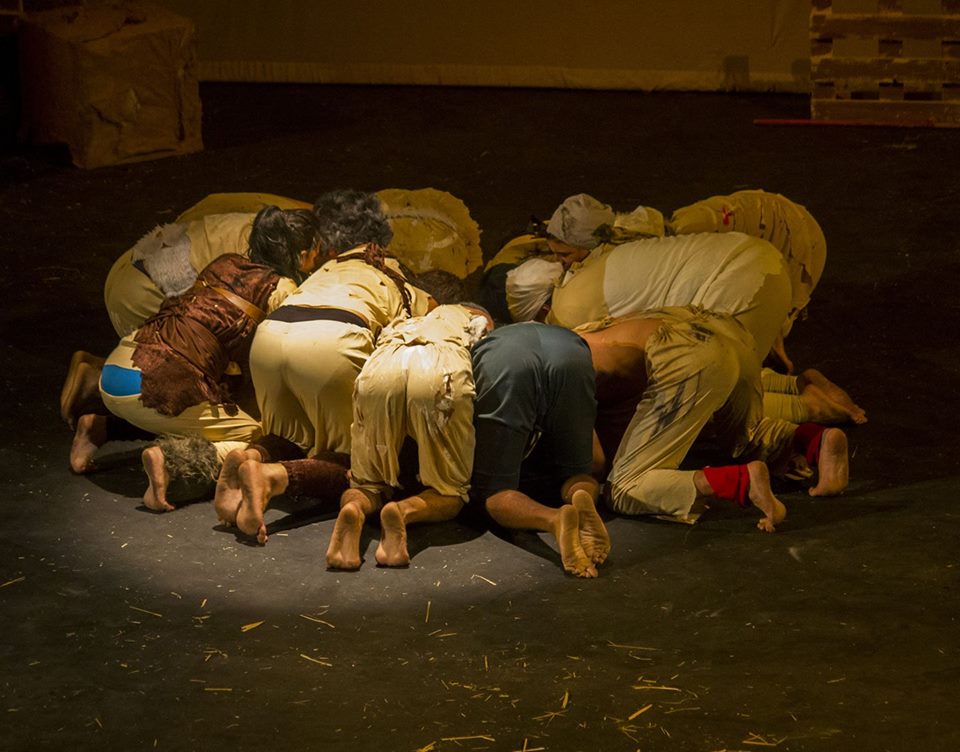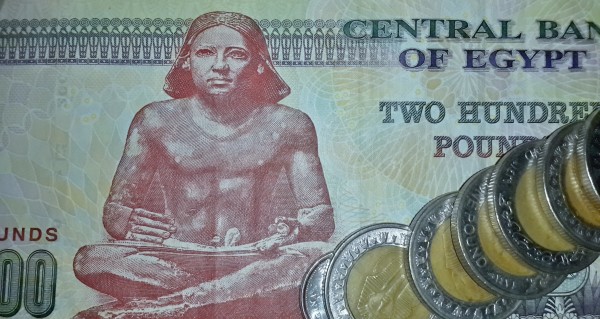Islamic historical sites could be lost to future generations
The threat to Muslim monuments and heritage centers had well existed even before the extremist group Islamic State of Iraq and the Levant began destroying centuries-old revered religious sites in the Middle East

BY CARAVAN STAFF AND FARAH TAHA
When Donny George was finally able to enter the National Museum in Baghdad, the wanton destruction and ruin brought him to tears.
It was April 14, 2003 and US troops had finally moved to secure the building that had housed Iraq’s 7,000-year historical artifacts – priceless items ranging from the Sumerian, Assyrian and Babylonian Empires through Islamic times up to the present.
Statues had been beheaded; displays destroyed and tens of thousands of valuable pieces stolen.
George, the museum’s General Director and the then President of the Iraq State Board of Antiquities and Heritage, would spend the rest of his life tracking down and recovering some 15,000 pieces looted from Baghdad’s National Museum. He died in 2011 with thousands of pieces still unaccounted for.
Baghdad, incidentally, was also the seat of Islam under the Abbasid Caliphate, and it was under their tutelage that the Islamic Empire became the center for development of science, philosophy, architecture, mathematics, medicine and literature.
At the time, Dr Lamia Al-Gailani-Werr, an Iraqi archaeologist and member of the Iraqi State Board of Antiquities and former adviser to the Iraqi Reconstruction and Development Council, said: “I cannot picture the enormity of the loss to the heritage of Iraq.”
But there was more to come.
In 2005, the 9th Century spiral minaret of Samara (Malwiya) was badly damaged by mortar fire. Built by the Abbasids it was the largest minaret in the world for centuries.
A year later, the dome of the 10th Century Al Askari Mosque in Samarra – revered by both Shia and Sunni Muslims – was partially destroyed by militias.
In 2007, two of the last standing minarets in the mosque were also destroyed.
Although the Iraqi government restored much of the mosque, there remained the specter that not even the most iconic symbols of Islamic history would be spared during Middle East conflicts.
In the coming years, the enormity of the loss of ancient and Islamic heritage would not be felt by Iraq alone, but Syria, Egypt and even Saudi Arabia.
Conflict, uprisings, civil wars and ‘modernization’ have repeated the systemic erosion of Islamic culture’s expansive effect on world history.
The destruction seems to have increased in speed and severity in recent years.
In Mali last year, Al-Qaeda affiliated fighters – who had seized control of the north after the army had mutinied – burned down ancient libraries in Timbuktu in an act of revenge as they fled French peacekeepers.
The libraries housed thousands of documents, parchments and texts comprising the combined learning of hundreds of scholars since the 13th Century.
The texts included treatise on women’s rights, cultural and religious debates among the leading Islamic scholars of the time and spanned a number of languages including native Mali languages, Arabic and Hebrew.
Hundreds of Sufi shrines dating back to the 15th Century were labelled heretical and outside Islam and subsequently destroyed by the Al-Qaeda militia.
Timbuktu itself is a UNESCO World Heritage Site because of its reputation as a scholarly heartland in Africa during the 15th and 16th Centuries.
But it is in Syria that social media has disseminated photographic evidence of mosques, libraries, and souks that were gutted and destroyed.
Many of these buildings had been listed as World Heritage sites by the United Nations Educational Scientific and Cultural Organization (UNESCO).
Aleppo’s ancient market place – the souk – which leads from the downtown area on an upward slope to a fortress used by Muslim warrior and leader Salahdin has been utterly destroyed.
The earliest souk in the market place was built in 1450; later souks added and expanded the marketplace until it became the biggest covered market in the world at spanning some 13 kilometers in length .
The entire district of the market place became a strategic battlefield between the Syrian military and the so-called Free Syrian Army.
Within days it was burned down and much of its centuries-old shops and wares were gone.
UNESCO called its destruction a tragedy.
In September 2012, the BBC called on its readers to contribute pictures of the souk in a bid to create a collective, crowd-sourced archive of the way the World Heritage site looked before it fell to aerial bombardment and urban warfare.
While the BBC and others were trying to salvage some of the heritage, fierce fighting continued to create a travesty: In 2013, the Omari Mosque in Deraa – another strategic region for both parties in the conflict – was destroyed by shelling.
It is believed to have been one of the oldest mosques in the world originally built by the Caliph Omar Al Khattab in just before his death in the mid-7th Century, and completed decades later.
The beautiful Umayyad Mosque in Aleppo, which has stood the test of time, the Crusades and even foreign invasions since 1090 was severely damaged in an exchange of artillery and mortar fire in 2013.
The minaret of the mosque was obliterated.
Although not a country being torn apart by civil war or invasion, events in Egypt in the last three years have led to a decline in security which opened the way for looting of its National Museum near the iconic Tahrir Square.
More importantly, however, has been the significant damage caused to the Islamic Museum in downtown Cairo which was hit by a car bomb targeting a security headquarters across the street.
One source said on the condition of anonymity that while the price of lost Islamic treasures could not be measured, the building itself will cost in the “tens of millions” to repair.
“The Islamic Museum in Cairo was fairly secure as a building having undergone a multi-million dollar renovation only a few years ago,” says Sultan Al Qassemi, Founder of the Barjeel Art Foundation and an influential commentator on Middle East affairs.
“However, the impact of the explosion at the adjacent state security bureau destroyed much of the historic artefacts in the museum,” he added.
Chahinda Karim, an Egyptologist, art historian and professor in the Middle East Studies Program at the American University in Cairo, says that art is one of the best visual manifestations of a culture and one of the best ways to introduce Islamic history and culture to students.
She believes that the objects in the museum were witness to a flourishing Islamic society that respected beauty and fine arts; rulers who encouraged artists to produce masterpieces in all materials and who made the Arabic script an art in itself.
“‘Islam as a religion and a way of life will never be affected by the loss of Museums and sites, but Islamic culture throughout the ages needs to be presented in order to remain alive,” she said.
“How will the new generations know the wonders of their ancestors if Museums and sites are destroyed? The past is important in the making of the future, it encourages new generations to develop their skills and do better than their predecessors,” she added.
In recent years, a number of historians and archaeologists have cautioned Saudi Arabia against the possible destruction of its Islamic past, thereby robbing future generations of the capacity to learn of their heritage in a physical sense.
Since 2012, Saudi authorities have undertaken a massive expansion project in the holy city of Mecca in a bid to make more room for pilgrims performing the Hajj every year.
But five-star accommodations have been racing ahead in tandem with this expansion project; dozens of new luxury hotels, apartment buildings and malls will pave over ancient ruins and sites in Mecca, some of which were inhabited by the Prophet Mohammed and his descendants.
While preserving history and heritage ultimately falls to the Saudi authorities in Mecca, in war-ravaged countries such as Iraq and Syria there has been for some time a global effort to digitize in photography and recorded narratives.
Some of the destroyed manuscripts in Mali, for example, had already been saved in digital form – digitized – by the Tombouctou Manuscripts Project, which has saved hundreds of manuscripts since 2002. In 2004, a study of the manuscripts themselves began in earnest.
The Islamic Heritage Project at Harvard University is another initiative which catalogs, conserves and digitizes ancient texts, manuscripts, pictures and maps dating from the 10th Century.
“Digitization of Islamic heritage such as the Al Azhar documents [at the Islamic Museum in Cairo] as well as the production of Western museums interested in Islamic heritage means that a lot of this important Islamic history will be preserved although not in its “natural environment,” says Al Qassemi.
He adds that as historical structures are stripped down or destroyed, there are efforts to rebuild – such as the Sarajevo Library, which was destroyed during the Balkan civil wars – for future generations.




